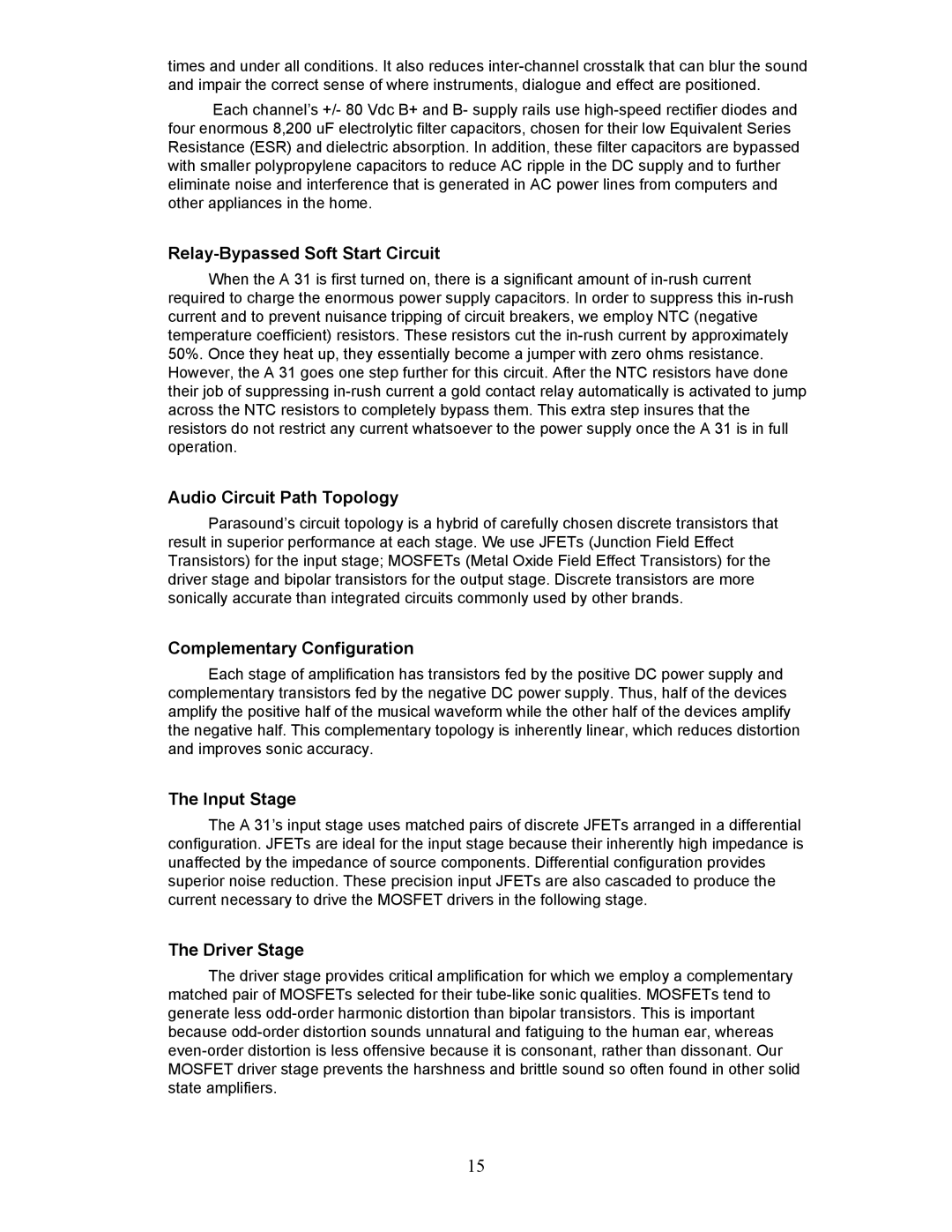times and under all conditions. It also reduces
Each channel’s +/- 80 Vdc B+ and B- supply rails use
Relay-Bypassed Soft Start Circuit
When the A 31 is first turned on, there is a significant amount of
Audio Circuit Path Topology
Parasound’s circuit topology is a hybrid of carefully chosen discrete transistors that result in superior performance at each stage. We use JFETs (Junction Field Effect Transistors) for the input stage; MOSFETs (Metal Oxide Field Effect Transistors) for the driver stage and bipolar transistors for the output stage. Discrete transistors are more sonically accurate than integrated circuits commonly used by other brands.
Complementary Configuration
Each stage of amplification has transistors fed by the positive DC power supply and complementary transistors fed by the negative DC power supply. Thus, half of the devices amplify the positive half of the musical waveform while the other half of the devices amplify the negative half. This complementary topology is inherently linear, which reduces distortion and improves sonic accuracy.
The Input Stage
The A 31’s input stage uses matched pairs of discrete JFETs arranged in a differential configuration. JFETs are ideal for the input stage because their inherently high impedance is unaffected by the impedance of source components. Differential configuration provides superior noise reduction. These precision input JFETs are also cascaded to produce the current necessary to drive the MOSFET drivers in the following stage.
The Driver Stage
The driver stage provides critical amplification for which we employ a complementary matched pair of MOSFETs selected for their
15
